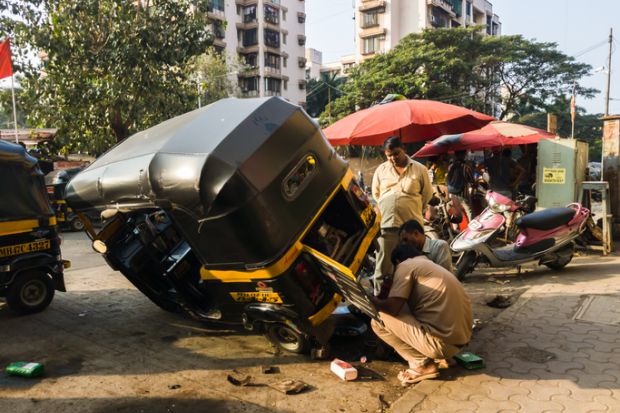India’s higher education system may be famous, in part, for its Indian Institutes of Technology (IIT) network. During the past decade or so, however, the popularity of engineering education in the country has been declining.
According to data recently released by the All India Council for Technical Education (AICTE), the government regulatory authority for technical institutions, a total of 2.36 million student places are available across the colleges it oversees in 2021-22. This is the lowest number since before 2012-13, when 2.69 million places were available. The peak year was 2014-15, when there were 3.18 million places.
This decline reflects a wider 7.5 per cent fall in the number of engineering and technology students in India, from 4.17 million in 2012-13 to 3.86 million in 2019-20. This has occurred despite an ongoing expansion in overall undergraduate numbers, from 24.2 million in 2012-13 to 30.6 million in 2019-20: a rise of 26.5 per cent. Hence, according to the AICTE data, the proportion of the Indian undergraduate body made up of engineering and technology students shrank from 17.3 per cent to 12.6 per cent over that period.
The explanation for the declining popularity of engineering is in some ways quite straightforward, but it is still puzzling.
Engineering education began to take off in the 1980s, and the growth accelerated during the 1990s. Encouraged by several state governments, hundreds of private colleges were set up across the country to meet the demand among India’s large and growing population of aspirational young people. One study reported that the number of engineering colleges nearly tripled, from 562 to 1,522, between 1997-98 and 2006 alone. During the same period, the annual student intake in engineering increased more than fourfold, from 134,298 to 550,986.
The national government also participated in the growth, announcing an ambition to open an IIT in every state. This saw the network expand from five institutions to 19. But while these institutions aspire to high standards, too many of the private institutions are of poor quality. The government did not do enough to prevent them from being established or, even worse, from continuing to operate.
These institutions charge significantly higher tuition and other fees than public institutions. Students often incurred debt to attend them in the belief that an engineering degree would improve their life chances. However, the poor quality of education they received left many unemployable and unable to repay their loans.
What seems to have happened is that, over time, students have come to realise that engineering degrees are not the guaranteed ticket to a stable job and better life that they were once believed to be. This is driving a market correction among providers. The poor-quality colleges, in particular, are closing down in increasing numbers. It is reported that at least 50 engineering colleges have disappeared each year since 2015, hitting 63 this year.
However, the declining popularity of engineering education is still perplexing when you look at employability figures. According to the 2021 India Skills Report, 45.9 per cent of the nation’s college graduates are considered employable. But that figure rises to 46.8 per cent among holders of the BTech, the qualification earned by engineering students. That is higher even than for MBA graduates (46.6 per cent). By contrast, 40.3 per cent of arts graduates are considered employable.
Data from the All-India Survey of Higher Education show that while the number of students in engineering and technology has declined, there has been a significant increase in the numbers of students in science disciplines, from 3.09 million in 2012-13 to 4.9 million in 2019-20. And according to the India Skills Report, the employability of science graduates is just 30 per cent. It has typically not exceeded 40 per cent in recent years, whereas the employability of engineering graduates has averaged about 50 per cent.
While none of these numbers is impressive, the fact is that engineering graduates are still more employable than other graduates. In that context, the fall of engineering is actually quite hard to explain. Perhaps it demonstrates the reputational damage that bad operators can inflict even on a sector focused on delivering precisely the skills that India’s economy most highly prizes.
Pushkar is director of the International Centre Goa, Dona Paula (Goa). These are his personal views.
后记
Print headline: Systems failure




